|
|
|
|
|
|
|
|
|
|
|
|
|
 |
 |
 |
 |
|
 |
 |
 |
 |
|
|
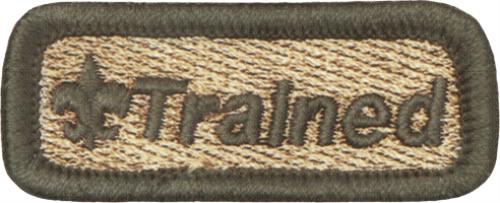 |
|
A leader in Scouting is considered fully trained and entitled to wear
the Trained leader emblem when he or she has completed the training
courses for their position. The current courses for leaders in Scouting units are: |
| |
|
|
Youth Protection Training
Child abuse is a serious problem in
our society, and unfortunately, it can occur anywhere, even in
Scouting. Youth safety is of paramount importance to Scouting. For that
reason, the BSA continues to create barriers to abuse beyond what have
previously existed in Scouting.
The Boy Scouts of America places
the greatest importance on providing the most secure environment
possible for our youth members. To maintain such an environment, the BSA
has developed numerous procedural and leadership selection policies,
and provides parents and leaders with numerous online and print
resources for the Cub Scout, Boy Scout, and Venturing programs.
New leaders are required to complete Youth Protection training within
30 days of registering. To take the training online, go to www.MyScouting.org
and establish an account using the member number you receive when you
register for BSA membership. If you take the training online before you
obtain a member number, be sure to return to MyScouting and enter your
number for training record credit. Your BSA local council also provides
training on a regular basis if you cannot take it online. For more
information, refer to the back of the BSA adult membership application,
No. 524-501.
Youth Protection training must be taken every two
years. If a volunteer does not meet the BSA’s Youth Protection training
requirement at the time of recharter, the volunteer will not be
reregistered.
We encourage all adults, including all parents, to take the BSA’s Youth Protection training.
Leader Specific Training
Cub Scout Leader Specific training has been developed for the following positions:
- Cubmasters and assistants
- Pack committee
- Tiger Cub den leaders
- Wolf and Bear den leaders and assistants
- Webelos den leaders and assistants
- Pack trainers
While
Cub Scout leader training is available online through e-learning at
myscouting.org, instructor led, face-to-face courses are the preferred
method of instruction because of the opportunity to interact with other
leaders, get questions answered, and have fun!
Great Training, but not Required to be Considered Trained
Fast Start Training
Fast
Start training is offered for all new leaders who are not able to
immediately attend the leader specific training for their position, and
need to get up to speed right away. New leaders choose the Fast Start
they need to take: Cub Scout Leader, Boy Scout Leader, Varsity Scout
Leader, or Venturing Crew Leader. All Fast Start can be completed via
e-learning at myscouting.org.
This Is Scouting
This
Is Scouting is a course designed to help Scouting leaders gain a better
understanding of how Scouting works. It includes six modules of
training, which cover the Mission of Scouting, Programs for All Ages,
Scouting Is Fun, Scouting in the Community, Keeping Our Youth Safe, and
Scouting’s Legacy. This training is available on DVD or can be completed
via e-learning at myscouting.org.
Please see this section for a variety of training materials, from quick references to complete courses, all
designed to help our members improve leadership skills and deliver a
quality program.
|
|
 |
 |
|
 |
 |
 |
 |
 |
 |
 |
 |
|
 |
 |
 |
 |
|
|
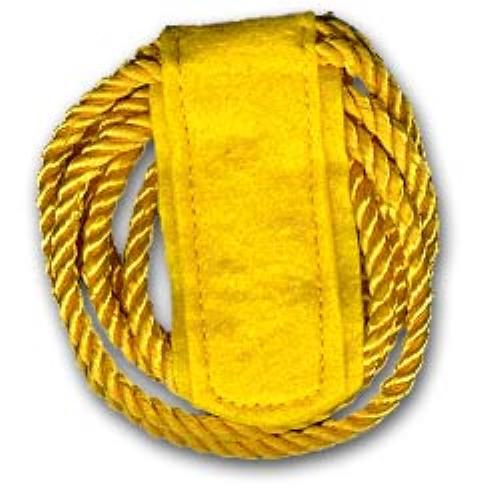 |
|
While not an "Adult Leader," the Denner and Assistant Denner are the most important youth leadership positions in Cub Scouts. A denner is a Cub Scout or Webelos Scout who is elected to be the temporary youth leader of his den. All Tiger Cub, Wolf, Bear, as well as Webelos
Dens should elect a Denner. A den may elect a new Denner every few
weeks, monthly, or other term. The Denner wears the gold double-strand Denner shoulder cord No. 00368 over his left shoulder.
The den leader and den chief determine his responsibilities, which might include helping to set up and clean up the den meeting place; helping with games, ceremonies, tricks, and puzzles; leading a song; or acting as den cheerleader. The denner should be given meaningful responsibilities and recognition to help him learn how to be a leader. The denner wears a shoulder cord on the left shoulder. Some dens also have assistant denners who assist the denner and may move up to the denner position after his rotation.
|
|
|
 |
 |
|
 |
 |
 |
 |
 |
 |
 |
 |
|
 |
 |
 |
 |
|
|
A strong Pack Committee will have individual members assigned to such
areas as record keeping and correspondence, finances, advancement,
training, public relations, and membership and reregistration. The pack
committee chair decides how the responsibilities should be divided and
gives committee members assignments. Packs
may have other committee members other than those listed below
including members at large as determined by the Pack Committee Chair.
With a committee of three, members must assume responsibility for more areas of service than with a committee of seven or more. Although packs can and do operate with a minimum of three committee members, experience has shown that a larger committee generally ensures a stronger, more stable pack and is better able to perform all the required functions to ensure a successful pack
program. It is also a way of involving more pack families in meaningful service to the pack.
|
|
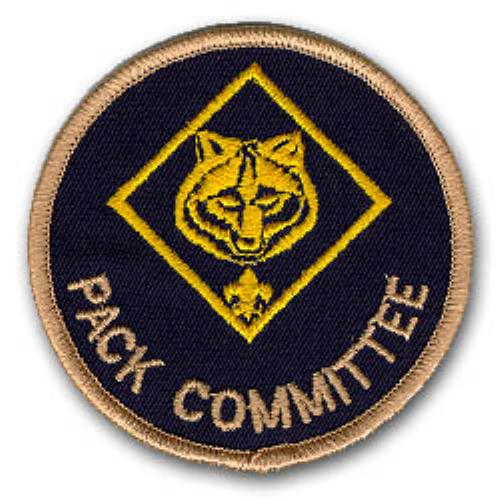 |
|
Responsibilities of the committee include:
- Making recommendations regarding pack leadership to the chartered organization for final approval of pack leadership.
- Recruiting the Cubmaster and one or more assistant Cubmasters, with the chartered organization’s approval.
- Coordinating the pack’s program and the chartered organization’s program through the chartered organization representative.
- Helping with pack charter renewal.
- Helping to stimulate the interest of adult family members through proper programming.
- Supervising finances and equipment.
- Vigorously assisting the Cubmaster.
- Ensuring that all Cub Scouts receive a year-round, quality program.
The treasurer is appointed by the committee chairman to
ensures the pack’s finances are sound, handle funds, pay bills, maintain accounts, coordinate
the annual Friends of Scouting campaign, and supervise fundraising.
The advancement chair is appointed by the
committee chairman to ensure boys move through the ranks of Cub Scouting each year
and transition into a Boy Scout troop. The advancement chair is also
responsible for record keeping and submitting advancement reports.
The membership chair is appointed by the committee chairman
to help ensure a smooth transition of new Scouts into the unit and
orientation for new parents. Responsible for recruiting campaigns and for year-round recruitment, growth and retention. This position is essential to the health of the pack. Along with the Cubmaster and pack committee, this position develops and carries out a plan for year-round membership growth. Plans, coordinates, and leads the annual rechartering process.
The secretary is appointed by the unit committee chairman to ensure proper records are kept within the pack, to keep minutes and records, send notices, and handle publicity.
The public relations chair keeps pack activities visible to the public, as well as to the families of the pack.
The outdoor activity chair helps the boys develop a love for the outdoors by helping the Cubmaster plan and arrange for outdoor activities, helping the Webelos den leaders plan overnight campouts, and filing tour permits with the local council.
Other important committee members within our pack include Popcorn Colonel, Webmaster, Photographer, Historian, and Pack Trainer. |
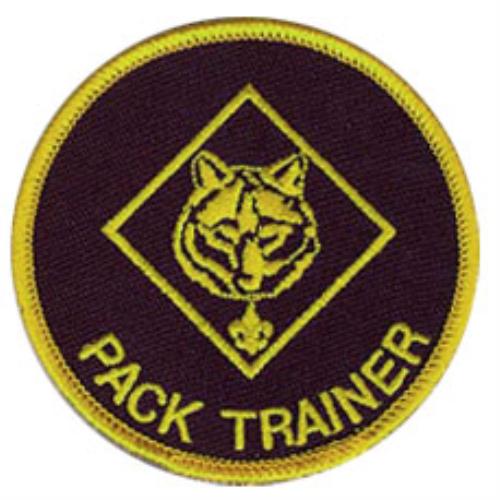 |
|
The Pack Trainer conducts, or facilitates, the training of
leaders and parents in the pack. Pack Trainer is a registered pack
position and is a voting member of the pack Committee.
Under the direction of the Pack Committee Chairperson, the pack trainer helps leaders and parents understand purposes, policies, and procedures of the Cub Scouting
program. The pack trainer orients parents and leaders and guides pack
leaders in carrying out their specific position responsibilities. The
pack trainer promotes training to help leaders learn to plan and conduct
pack and den meetings and activities. Regardless of the size of the
pack committee, every pack should have one of its committee members
registered as a pack trainer.
New leaders and adult family members should receive orientation within one week of joining the pack, and leaders should be encouraged to receive position-specific training within 30 days. The goal of the pack trainer is to get 100 percent of the pack leadership trained in their position responsibilities.
|
|
|
 |
 |
|
 |
 |
 |
 |
 |
 |
 |
 |
|
 |
 |
 |
 |
|
|
While they are not members of the pack, Unit Commissioners are district and council leaders who help Scout units succeed. They coach and consult with adult leaders of Cub Scout packs, Boy Scout troops, and Venturing crews. Unit Commissioners help maintain the standards of the Boy Scouts of America.
They also oversee the unit charter renewal plan so that each unit
reregisters on time with an optimum number of youth and adult members.
The commissioner helps the pack by:
- Being a friend who helps the pack to be successful
- Helping to solve problems and offering suggestions
- Working with the pack committee and leaders of the chartered organization to maintain a close relationship
- Helping to establish and maintain a good pack-troop relationship
- Assisting at pack meetings with uniform inspections and other pack activities
- Assisting with the pack’s annual charter renewal
- Helping the pack earn the annual quality unit award
- Providing practical support, such as people, equipment, and materials
- Visiting pack leaders’ meetings when invited, and helping however possible
- Encouraging the pack to participate in district/council activities, such as Scout-o-rama, council popcorn sales, etc.
|
|
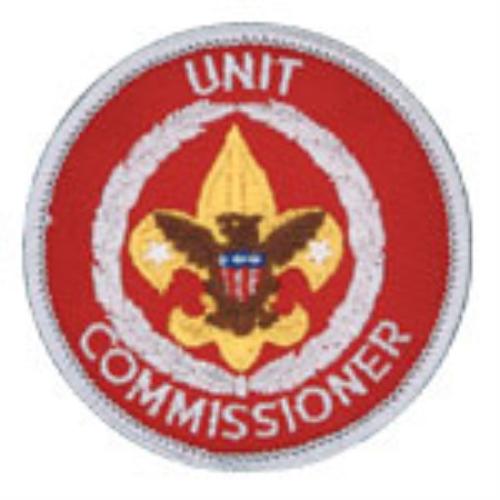 |
|
|
 |
 |
|
 |
 |
 |
 |
|
|
|
|
|
|
|
|
|